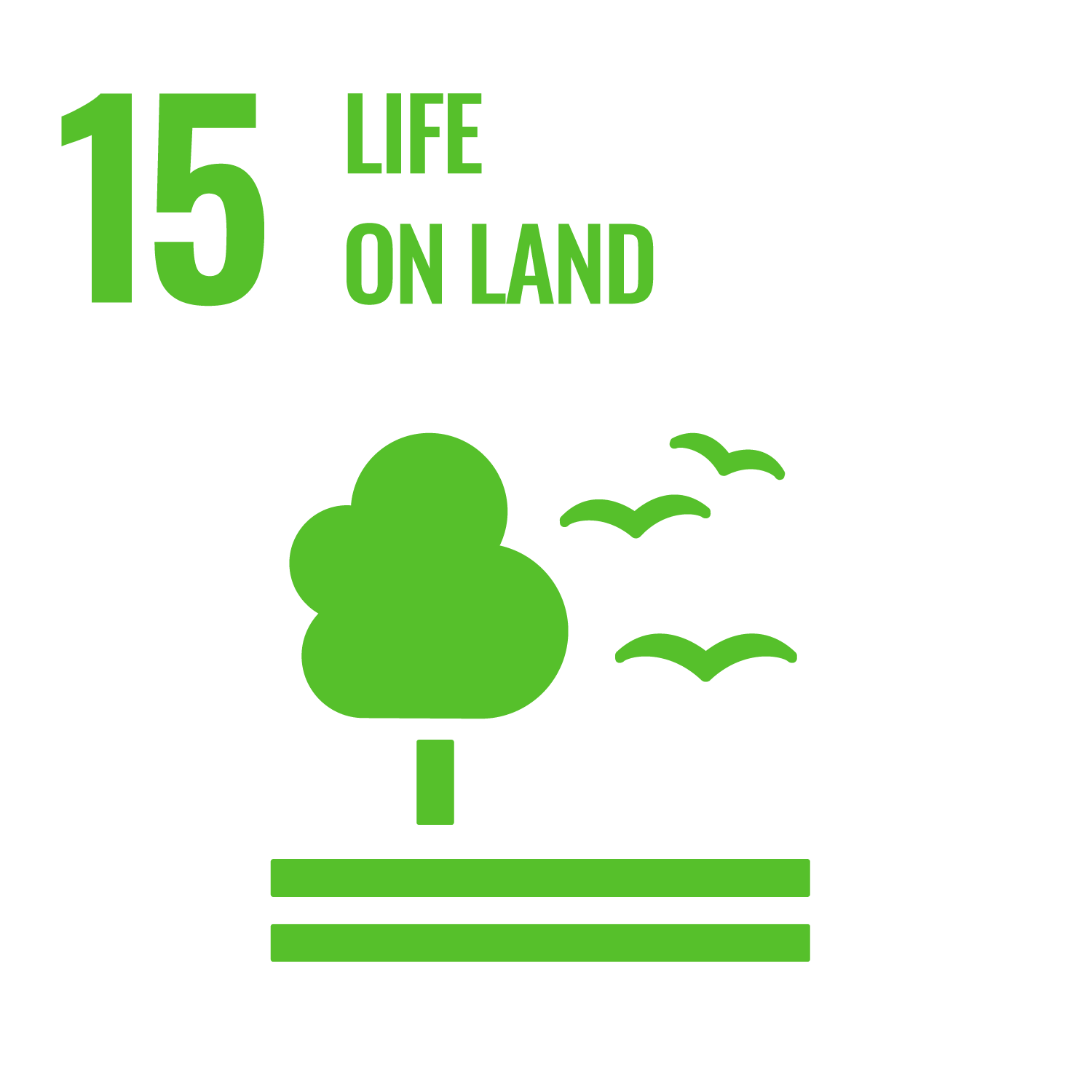 Goal 15. Life on Land
Goal 15. Life on Land
AASTMT Monitoring IUCN and Conservation Species Policy
BRIEF DESCRIPTION
Within regions impacted by AASTMT's operations, species listed on the IUCN Red List and national conservation registries are to be protected, monitored, and sustainably managed through the implementation of the AASTMT Monitoring IUCN and Conservation Species Policy. It discourages destructive procedures that could put species in jeopardy and promotes the use of moral, non-lethal research techniques such gathering fluids, feathers, seeds, or genetic material. In addition to incorporating biodiversity awareness and the UN SDGs 13, 14, and 15 into academic curricula, student projects, and staff training, the policy guarantees yearly monitoring and reporting, including updated species lists and conservation reports. As seen by its involvement in projects like TouMaLi (2021–2025) and representation at international forums like MEPC 82 (London, 2024), AASTMT actively connects with international frameworks like IUCN, IMO, and UNEP in addition to campus-level conservation initiatives. By implementing this policy, AASTMT strengthens its position as a regional leader in biodiversity conservation and a link between research, education, and global environmental governance.
Scope and Commitment
This policy describes how Action 15.3.2 Monitoring IUCN and Conservation Species Policies is being applied throughout all campus branches of the Arab Academy for Science, Technology &Maritime Transport (AASTMT) which align with new milestone IUCN National Committee Established in Egypt, 30 JUL, 2025. The primary objective of this policy is to identify, monitor, and protect any species listed on the IUCN Red List or national conservation lists that inhabit areas affected by AASTMT’s operations. This policy aims to guide the creation and enforcement of regulations to protect these species, while encouraging ethical research practices related to endangered species. The policy applies to all members of the AASTMT community, including students, staff, contractors, vendors, and visitors.
1 Aim of policy
- Campus Level: Increase biodiversity monitoring on AASTMT campuses with an emphasis on habitat preservation and endangered species.
- At the regional level, TouMaLi fieldwork and awareness efforts can help reduce marine trash.
- International Level: By representing IAMU at IMO MEPC 82, you can have an impact on maritime environmental protection policy.
- Academic Level: Increase the use of ethical and non-lethal research methods in postgraduate studies and courses.
2 Introduction
By updating the framework of its Monitoring IUCN and protection Species Policy in 2025, the Arab Academy for Science, Technology & Maritime Transport (AASTMT) underlined its dedication to environmental stewardship and biodiversity protection. This policy expands on previous initiatives (2023–2024) to match the university's activities with international frameworks and national conservation priorities, such as the International Maritime Organization's Marine Environmental Protection Committee (MEPC), the United Nations Sustainable Development Goals (SDGs 14 & 15), and the IUCN Red List of Threatened Species.
The 2025 update focusses on the convergence of academic research, campus-wide conservation practices, and worldwide participation. AASTMT is now positioning itself not only as a regional educational leader, but also as an active participant in global environmental governance. This is evidenced by its participation in the TouMaLi Project (2021-2025), which addresses marine litter in North Africa, IAMU's attendance at MEPC 82 in London (2024). AASTMT's revised structure includes annual conservation reporting, transparent research permit systems, enhanced training programs, and expanded faculty and student roles, promoting biodiversity protection across campuses and academic disciplines.
3 Policy Statement
AASTMT is dedicated to the conservation and preservation of species included on national conservation records and the IUCN Red List, making sure that all campuses and related activities actively support the preservation of biodiversity. Annual monitoring and reporting, such as the release of conservation reports, frequent revisions to species lists, and open research permission processes, are prioritized in the revised 2025 framework. In addition to advocating safe sample techniques using fluids, feathers, seeds, or genetic material, AASTMT continues to advocate for moral, non-lethal research methods and forbids destructive tactics that could put species in even greater danger. AASTMT extends its policy beyond campus limits to actively participate in regional and global efforts through cooperative research, responsible management, and relationships with local people, regulatory bodies, and conservation organizations. Participation in the TouMaLi Project (2021–2025), which addresses marine litter in North Africa, representation at the IMO Marine Environmental Protection Committee (MEPC 82, London 2024), and alignment with the themes of the next IUCN World Conservation Congress 2025 (Abu Dhabi) are examples of this commitment. AASTMT is committed to creating a sustainable culture where biodiversity protection is fully interconnected with academic research, community involvement, and campus management. AASTMT will keep updating and fortifying its monitoring protocols in accordance with the most recent scientific discoveries, IUCN principles, and international conventions, guaranteeing proactive steps to lessen biodiversity loss and protect habitats impacted by its operations.
4 Standards and Forms
4.1 Standards
- Species Monitoring: yearly updates to the IUCN Red List of species.
- Training & Education: SDG seminars on social exclusion, biodiversity, inequality, and catastrophe vulnerabilities held around the campus.
- AASTMT Monitoring IUCN and Environmental Conservation Reports: The first yearly conservation report, which will include socioeconomic and environmental indicators (poverty line, unemployment, inequality), is scheduled for 2025.
4.2 Forms
- Initiative suggestion form.
- Conservation actions taken
5 Roles and Responsibilities
- SDGs 15 officers are in charge of monitoring the application of the policy and provide assistance when needed.
- Students: While on AASTMT campuses, participate in the implementation of programs as needed, abide by the rules, and help safeguard species.
- International Representatives: Representatives of AASTMT will participate in IMO and IUCN platforms.
6 Objectives
- Improve species conservation without raising the risk of extinction, non-lethal research methods (such as the collection of fluids, seeds, and DNA).
- Encourage all AASTMT faculties to provide instruction, training, and knowledge on SDGs 13, 14, and 15, incorporating social policy and biodiversity into student research, curriculum, and community engagement.
- Participate in global projects like MEPC 82 (maritime environmental governance) and the TouMaLi Project (marine litter reduction) to fortify international cooperation while positioning AASTMT as a regional leader and worldwide contributor.
7 Performance Indicators
- Involvement in regional and global events as (MEPC 82, TouMaLi).
- Annual reviews of policy compliance.
- number of students and staff who have received biodiversity training.
8 Action Plan
The AASTMT Monitoring IUCN and Conservation Species Policy (2025) Updated Action Plan offers a methodical framework for carrying out social sustainability and biodiversity conservation projects on all AASTMT campuses. This plan, which builds on the framework established in 2023–2024, ensures systematic execution and accountability by converting policy objectives into realistic activities, timelines, and quantifiable performance indicators. In addition to incorporating social protection elements like inequality, and disaster susceptibility, the action plan places a strong emphasis on species monitoring, moral non-lethal research, community awareness, education, and open research permit procedures. The TouMaLi Project (2021–2025) on marine litter reduction and AASTMT's representation of IAMU at the IMO MEPC 82 (London, 2024) are two examples of actual AASTMT efforts that are included in it. The updated action plan positions the AASTMT as a model institution in the MENA region for bridging research, education, and environmental governance by tying local campus activities with regional and international frameworks. This ensures that AASTMT makes a meaningful contribution to both national conservation priorities and the global biodiversity agenda.
9 Evaluation of the program
|
Action Item |
Responsible Party |
Timelines |
Performance Indicator |
Resources Required |
|
Prepare annual report for Events |
SDG 15 Officers |
Annual report |
Number of events & projects |
Update’s annually |
|
Arrange seminars-workshops for biodiversity |
SDG 15 Officers, External Experts |
Annually |
Prepare budget for speakers and seminars |
Workshop organizer’s numbers |
|
Promote non-lethal sampling techniques |
SDG 15 Officers |
Ongoing |
Training programs |
Number of research projects using non- invasive methods |
|
Participation in International &National Events |
AASTMT Representatives |
2024-2025 |
Coordination and travel Support |
Participation Records |
|
Policy Update |
SDG 15 Officers |
Annually |
Feedback system |
Completion of revision |
10 A review program
|
Policy title |
AASTMT Monitoring IUCN and Conservation Species Policy |
|
Date Created: |
August 2024 |
|
Approving Body: |
SDGs Workforce Committee |
|
Version: |
2 |
|
Last Review Date |
2025 |
|
Next Review Date: |
2026 |
|
Policy Owner: |
|
|
Lead Contact: |
Prof. Dr. Kareem Tonbol TA. Elen Emad Ragga Ahmed |
|
Approval Signature
|
Dean of Scientific Research and Innovation Dr.Yasser Gaber |



